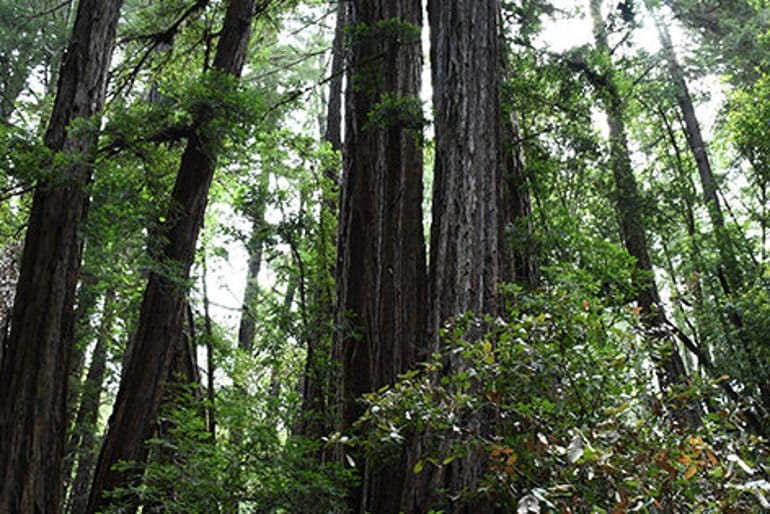Summary: The extracts of certain plants long used by Native Americans as topical analgesics activate the KCNQ2/3 potassium channel. The compound provides pain relief and prevents diarrhea.
Source: UC Irvine
In a University of California, Irvine-led study, researchers revealed a striking pattern following a functional screen of extracts from plants collected in Muir Woods National Monument, in coastal redwood forest land in California. They found that plants with a long history of use by Native Americans as topical analgesics were often also used as gastrointestinal aids.
The study, published today in Frontiers in Physiology, found plants that activated the KCNQ2/3 potassium channel, a protein that passes electrical impulses in the brain and other tissues, showed a long history of use by Native Americans as topical analgesics, to treat conditions such as insect bites, stings, sores and burns. Less intuitively, the same plants that activated KCNQ2/3 and were used as folk analgesics were often also used as gastrointestinal aids, especially for preventing diarrhea.
“Done in collaboration with the US National Parks Service, this study illustrates how much there is still to learn from the medicinal practices of Native Americans, and how, by applying molecular mechanistic approaches we can highlight their ingenuity, provide molecular rationalizations for their specific uses of plants, and potentially uncover new medicines from plants,” said Geoffrey Abbott, Ph.D., a professor in the Department of Physiology and Biophysics at the UCI School of Medicine.
KCNQ2/3 is present in nerve cells that sense pain, and its activation would be expected to soothe pain by disfavoring transmission of the pain signal. The breakthrough finding came when the team discovered that the same plant extracts that activate KCNQ2/3 have the opposite effect on the related intestinal potassium channel, KCNQ1-KCNE3. This finding was striking as previous studies on modern medicines showed that KCNQ1-KCNE3 inhibitors can prevent diarrhea.

The Abbott Lab is currently undertaking a much broader screen of native US plants toward these goals. Already they have shown that quercetin and tannic and gallic acids, present in several of the plants studied, explained many of the beneficial effects of the plants. The team also identified binding sites on the channel proteins that produce the effects.
With this knowledge at the molecular level of compounds that can activate versus inhibit closely related human ion channel proteins, future work can be directed at improving drug specificity and therefore safety, while retaining efficacy. More specifically, medicinal chemistry approaches can be applied to further optimize the plant compounds with the goal of treating pain and secretory diarrhea.
“I personally am very excited about the paper; it was my lab’s first published collaboration with the National Park Service, and it shines a light on the incredible ingenuity and medicinal wisdom of Californian Native American tribes,” said Abbott.
The public health implications for improved drugs in these areas are considerable. Novel, non-opioid analgesics are highly sought after as we battle the twin public health concerns of chronic pain and opioid addiction. In addition, according to the CDC, diarrheal diseases account for 1 in 9 child deaths worldwide; incredibly, diarrhea kills over 2000 children every day worldwide—more than AIDS, malaria and measles combined.
About this neuropharmacology research news
Author: Press Office
Source: UC Irvine
Contact: Press Office – UC Irvine
Image: The image is in the public domain
Original Research: Open access.
“KCNQ and KCNE Isoform-Dependent Pharmacology Rationalizes Native American Dual Use of Specific Plants as Both Analgesics and Gastrointestinal Therapeutics” by Geoffrey W. Abbott et al. Frontiers in Psychology
Abstract
KCNQ and KCNE Isoform-Dependent Pharmacology Rationalizes Native American Dual Use of Specific Plants as Both Analgesics and Gastrointestinal Therapeutics
Indigenous peoples of the Americas are proficient in botanical medicine. KCNQ family voltage-gated potassium (Kv) channels are sensitive to a variety of ligands, including plant metabolites.
Here, we screened methanolic extracts prepared from 40 Californian coastal redwood forest plants for effects on Kv current and membrane potential in Xenopus oocytes heterologously expressing KCNQ2/3, which regulates excitability of neurons, including those that sense pain.
Extracts from 9 of the 40 plant species increased KCNQ2/3 current at –60 mV by ≥threefold (maximally, 15-fold by Urtica dioica) and/or hyperpolarized membrane potential by ≥-3 mV (maximally, –11 mV by Arctostaphylos glandulosa).
All nine plants have traditionally been used as both analgesics and gastrointestinal therapeutics. Of two extracts tested, both acted as KCNQ-dependent analgesics in mice.
KCNQ2/3 activation at physiologically relevant, subthreshold membrane potentials by tannic acid, gallic acid and quercetin provided molecular correlates for analgesic action of several of the plants. While tannic acid also activated KCNQ1 and KCNQ1-KCNE1 at hyperpolarized, negative membrane potentials, it inhibited KCNQ1-KCNE3 at both negative and positive membrane potentials, mechanistically rationalizing historical use of tannic acid-containing plants as gastrointestinal therapeutics.
KCNE dependence of KCNQ channel modulation by plant metabolites therefore provides a molecular mechanistic basis for Native American use of specific plants as both analgesics and gastrointestinal aids.







